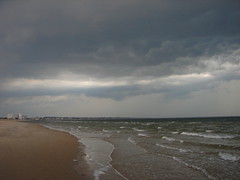Priorities
Clean-up for the Chesapeake Bay
Jun 11 2009
 With his colleagues from Virginia and Maryland, Senator Warner introduced legislation yesterday that would strengthen and enhance the National Oceanic and Atmospheric Administration's (NOAA) role in the effort to clean-up the Chesapeake Bay.
With his colleagues from Virginia and Maryland, Senator Warner introduced legislation yesterday that would strengthen and enhance the National Oceanic and Atmospheric Administration's (NOAA) role in the effort to clean-up the Chesapeake Bay.
The bill -- called the Chesapeake Bay Science, Education and Ecosystem Act of 2009 -- focuses the relevant science, research and resource management capabilities of NOAA and enhances its commitment to scientific data collection, the development of fishery management practices and habitat restoration. It also seeks to strengthen NOAA's environmental programs.
Senator Warner said:
“This legislation will extend NOAA’s environmental education efforts, promoting effective partnerships with working watermen and with the environmental community. Strengthening NOAA’s ability to collect relevant data will have broad applications for our collective efforts to restore the Bay.”
Senator Jim Webb co-sponsored the legislation, along with Maryland Senators Barbara Mikulski and Ben Cardin.
The bill includes four primary objectives:
- Increases collaboration between the various programs and activities at NOAA to further NOAA’s coastal resource stewardship mission.
- Authorizes the Chesapeake Bay Interpretative Buoy system, is a system of buoys that reports real-time weather and environmental information such as wind speed, temperature, and wave height. The buoys also provide information about John Smith’s adventures during his 1608 voyage.
- Strengthens the Chesapeake Bay Watershed Education and Training Program which is a competitively based program that supports existing environmental education programs, fosters the growth of new programs, and encourages the development of partnerships among environmental education programs throughout the entire Chesapeake Bay watershed. This program furthers NOAA’s commitment to educational programs.
- Assists watermen on the Chesapeake by expanding technical assistance that NOAA offers on helping the watermen develop aquaculture programs. The bill expands the expertise the NOAA offers beyond native oyster populations to include fish and shellfish aquaculture. It also promotes submerged aquatic vegetation propagation programs which act as natural filters for the Chesapeake Bay.